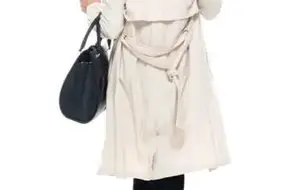-
Welcome to Taipei, where bustling modernity meets rich cultural heritage
-
Wondering when to plan your Taipei adventure? Let’s break it down. The best time to visit Taipei largely depends on what you’re seeking. Spring (March to May) and autumn (September to November) are widely celebrated for their mild weather, vibrant festivals, and comfortable crowds. These seasons offer the perfect balance—warm days, cool breezes, and clear skies, ideal for exploring landmarks like Taipei 101, Longshan Temple, and the lush Elephant Mountain Park. But Taipei’s charm isn’t limited to these months. Let’s dive deeper into how seasons shape your experience.
What’s the Ideal Weather Like in Taipei?
Taipei’s subtropical climate means hot, humid summers (June to August) and cooler, rainy winters (December to February). During spring and autumn, temperatures hover between 18–25°C (64–77°F), making it easy to stroll through neighborhoods like Ximen or cycle along the Danshui River. Summers, while steamy, bring fewer crowds and budget-friendly travel deals. Winters can be chilly and drizzly, but the city’s indoor attractions (think: National Palace Museum or night markets) shine during this time.
Season Average Temp (°C) Rainfall Best For Spring 18–25 Low Temples, hiking, cherry blossoms Summer 28–34 High Night markets, festivals, discounts Autumn 20–27 Moderate Photography, cultural events Winter 10–18 High Hot springs, museums, shopping How Do Seasonal Events Shape Travel Experiences?
Taipei’s calendar is packed with unique events. Spring kicks off with the Tianhou Mazu Festival (May), where parades and rituals light up Mengjia Yongshi Street. Autumn brings the Taipei Arts Festival (October), blending traditional and modern performances. Winter’s highlight? The Yongkang Street Christmas Lights, transforming alleys into twinkling wonderlands. Even steamy summers rock—SummerSonic music festivals and night market eats (like ice-sugar plumpp dumplings) become must-tries.
Are There Any Downsides to Taipei’s Peak Seasons?
Spring and autumn do draw crowds, especially at icons like the National Palace Museum or during Lunar New Year (late Jan/early Feb). If you prefer quieter streets, aim for weekdays or early mornings. Summer’s humidity can feel intense, but it’s offset by Taiwan’s famous “rain-proof” culture—many markets and malls have covered walkways. Winter’s rain, meanwhile, pairs perfectly with Taipei’s steamy beef noodle soup or hot springs in Beitou District.
What Off-the-Beaten-Path Activities Can Taipei Offer?
Beyond the guidebooks, Taipei thrives with hidden gems. In spring, hike Qilai Mountain for cherry blossoms without the Alishan crowds. Year-round, explore Daxiaoyong (Little Yuan Shan), a forested trail with panoramic city views. For a local vibe, join a wet-market tour in Huaxia Street—chat with vendors about seasonal produce. History buffs can trace Japanese colonial-era architecture in Mandarin District or sip tea at a century-old teahouse in Da’an Forest Park.
How Does Deep China Travel Enhance Your Taipei Experience?
At Deep China Travel, we tailor trips to beat the rush. Our guides know secret spots like Zhoushan Road’s indie shops or Wulai’s lesser-known hot springs. We’ll pair your visit with insider tips—whether it’s avoiding mid-autumn mooncake queues or navigating summer typhoon season safely. Let us craft your itinerary, from dim sum breakfasts in Ningxia Road to sunset views atop Maokong Gondola. Ready to discover Taipei’s rhythm? Let’s plan your journey!

